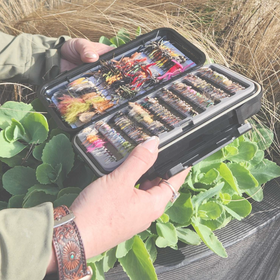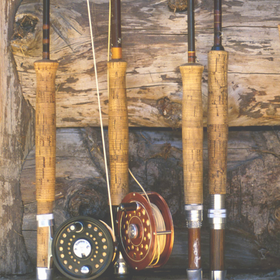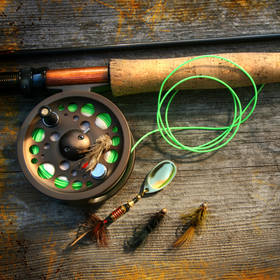
Because they are denizens of Northern Latitudes; Grayling are a mystery to many fly anglers. Once available in Northern locales of the lower 48, with the exception of Montana’s Big Hole River they are now fairly isolated in a band of cold water rivers and lakes in the upper most reaches. They are called after all Arctic Grayling.
Grayling are most noted for their oversized dorsal fin almost a sailfish. They are a cousin of trout and share many physical characteristics; although their scales and color more resemble a mountain whitefish.
Behavioral traits of Grayling are very specific based on habitat. Most populations, though not all, are migratory, and return to spawning ground year after year. Unlike salmon, individuals will repeat the journey many times in their lifetime. Because of their frigid environs all cycles of their life are compressed and urgent.Spawning is in spring; usually as early as possible and typically after spawning a down river migration occurs; where it is time to one thing. Eat. And eat they do, with a short summer; much feeding must be done before the cold hard winter shuts down their metabolism to the slowest of survival modes. And here is the nice part for trout fly rodders; the bugs, gear and techniques are all familiar. In fact by and large they are less finicky, easier to hook and when you are on the fish the action tends to last.
They are not a total cast in the farm pond; though they are wild fish. If there is a salmon population they will focus on eggs during the salmon spawn; and if smolt are present streamers are needed. If there are insects hatching, enticing them anything that does not match it will most likely prove futile. They are focused eaters. Otherwise a generic Parachute Adams or Royal Wulff will entice rises with satisfying frequency. Mosquito patterns are always a good bet; given their predilection to be on these northern rivers.
Grayling need to be managed carefully as they are slow growing and lay surprisingly few eggs compared with their cousins. Management of them has been successful in Alaska, Canada, Sweden and elsewhere guaranteeing their fisheries will last for generations. Combined with some ruggedly breathtaking scenery these fish are definitely worth every fly fisher’s time at least once in a lifetime.




